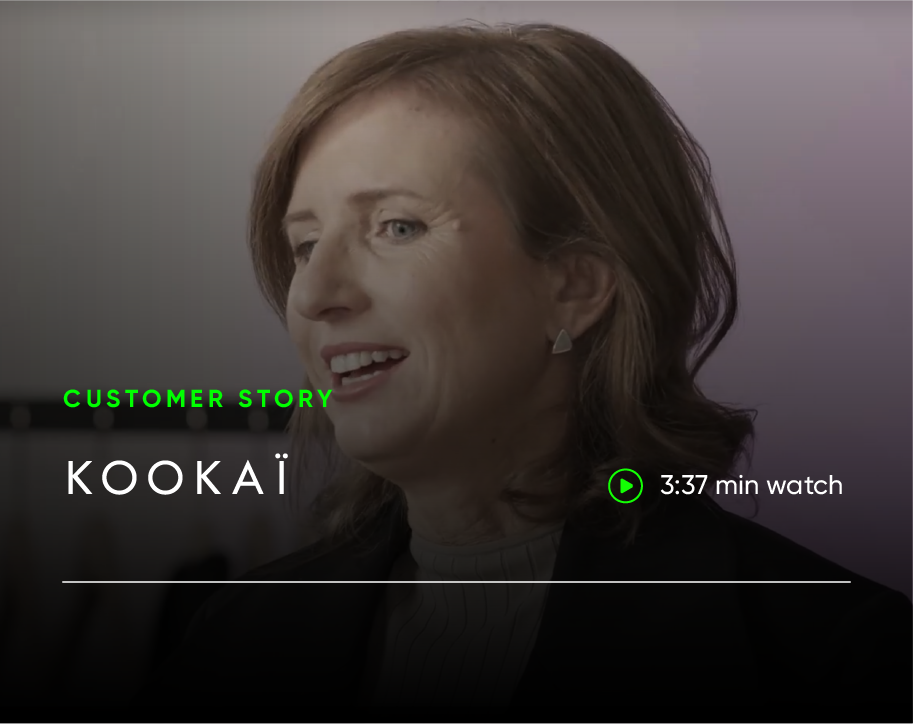How Paladin Optimized Sportswear Development with Browzwear
Paladin's adoption of Browzwear's 3D technology marked a transformative phase in its design and production processes.
October 6, 2023


50% Fewer Samples

Enhanced Team Collaboration

Faster Development Process

Move Directly to Pre-production without Mockups
KOOKAÏ, an Australian women's fashion label, embodies femininity, confidence, allure, and independent style. Founded in Paris in 1983, KOOKAÏ's vision was to provide fashionable, high-quality pieces at affordable prices. Today, KOOKAÏ remains true to its roots, offering a collection infused with Parisian chic, empowering women to express their individuality. Their ethical commitment is evident as most of their collection is produced in their own facilities in Fiji and Sri Lanka.
The primary driver for KOOKAÏ's adoption of 3D technology was to enhance speed to market and streamline the development process. This objective aimed at reducing the time and resources traditionally required for sample creation and testing.
"So, the main driver for adopting 3D was to improve speed to market and cut down on the development time and the number of samples that we go through in the development process," says Jacqui Lowe, Global Technical Officer, KOOKAÏ. "We found that we have reduced sampling by 50% by introducing 3D, which is a huge cost saving and time saving," adds Jacqui.

“We found that we have reduced sampling by 50% by introducing 3D,
which is a huge cost saving and time saving."

KOOKAÏ's choice of Browzwear was guided by several factors, one of which was Browzwear's Fabric Analyzer (FAB) for accurate testing of fabric properties. This feature enabled KOOKAÏ to digitize their fabrics and simulate them in 3D.
"One of the driving factors of choosing Browzwear was because Browzwear supplies a program and a fabric analyzer to test the properties of fabrics," says Kylie Lesic, Technical Pattern Maker, KOOKAÏ.
The advantages of fabric digitization became evident as it allowed KOOKAÏ to achieve accurate simulations of fabrics in 3D. "Some of the advantages of fabric digitization are that we can get a real-to-life simulation of the fabric in 3D," notes Kylie.
Browzwear's Open API platform played a pivotal role in KOOKAÏ's decision-making process. This platform seamlessly integrated with KOOKAÏ's existing 2D system, enhancing the efficiency of their design and development processes.
"Browzwear has an Open API platform, and at the time, our 2D system had a plugin that was directly related to VStitcher. So that was a really positive feature for us," says Jacqui.
The adoption of 3D simulation opened a world of opportunities for KOOKAÏ in product development. The technology allowed them to visualize design details, fabric tension, pressure mapping, and eliminate issues such as dragging and gaping.
"3D simulation opens a world of opportunity in product development, having the tools to visualize design details, fabric tension, and pressure mapping," says Vanessa Bolt, Creative Pattern Maker, KOOKAÏ.

"3D simulation opens a world of opportunity in product development,
having the tools to visualize design details, fabric tension, and pressure mapping."

In today's fast-paced fashion market, the ability to reduce lead times and development timelines is crucial. KOOKAÏ found that 3D technology allowed them to make immediate changes to garments, both technically and in terms of fit, expediting their time-to-market.
"In today's market, you really need to have your lead times and development timelines cut dramatically in order to have the product to market as quickly as possible," says Robert Cromb, Managing Director, KOOKAÏ.
One of the standout advantages of Browzwear's 3D technology was its ability to provide immediate feedback on garment changes. This allowed KOOKAÏ to iterate and refine designs rapidly.
"I think the advantage is that you get to see immediate changes to the garment, both technically and fit in an instantaneous manner. And I think Browzwear was one of the first companies that we came across that was really doing it in an innovative manner," adds Robert.
KOOKAÏ has been simulating everything in 3D for several years now, which has become a fundamental part of their design and development process. It enables them to check fit, change design concepts, and even eliminate designs that are not working before moving to the sample stage.
"For a number of years now, we have been simulating everything in 3D before we sample anything. It allows us to check fit, change design concepts, even cancel out designs if it's not working prior to cutting samples," notes Jacqui.
KOOKAÏ's 3D technology adoption has facilitated collaboration between their design team and print placement teams. This has led to earlier and more informed decisions in the design process.
"One of our day-to-day benefits of using 3D technology at KOOKAÏ is that we can instantly trial prints and print placement with the design team. This process helps the design team make decisions earlier in the process."

KOOKAÏ places complete trust in 3D technology because it enables them to accurately visualize how garments will look once they are sampled. This eliminates the need for mock-ups or trials, and in some cases, they can proceed directly to the pre-production stage.
"We have complete trust in the technology because we can understand how the garment will look once it's sampled. There's no need for mock-ups or trials, and we find that we even go straight to pre-production stage sometimes," says Vanessa.
KOOKAÏ believes that professionals in the industry should persist with 3D technology, as it eventually becomes indispensable, offering a profound understanding of its benefits.
"One piece of advice I would give to professionals in the industry is just persist with the tools because, in the end, you'll feel more reliant on the program and understand the benefits of it," notes Vanessa.
In conclusion, KOOKAÏ recognizes the importance of sustainability in the fashion industry. By leveraging 3D technology, they aim to reduce the negative impact of the industry on the environment, aligning their practices with a more sustainable future.
"The fashion industry in essence is not sustainable. So, if we can do a small thing to try and reduce the negative impact that the fashion industry has on our environment, then we should," concludes Jacqui.
KOOKAÏ's journey with Browzwear demonstrates how embracing 3D technology can revolutionize product development, enhance efficiency, and contribute to sustainability, ultimately benefiting both the company and the industry at large.
Paladin's adoption of Browzwear's 3D technology marked a transformative phase in its design and production processes.
Browzwear X Fookwah - Early Prototyping and Accurate, True-to-life 3D Garments
Discover how Perry Ellis uses Browzwear’s 3D technology to enhance design efficiency, cut costs, and innovate with a smart-to-market approach.